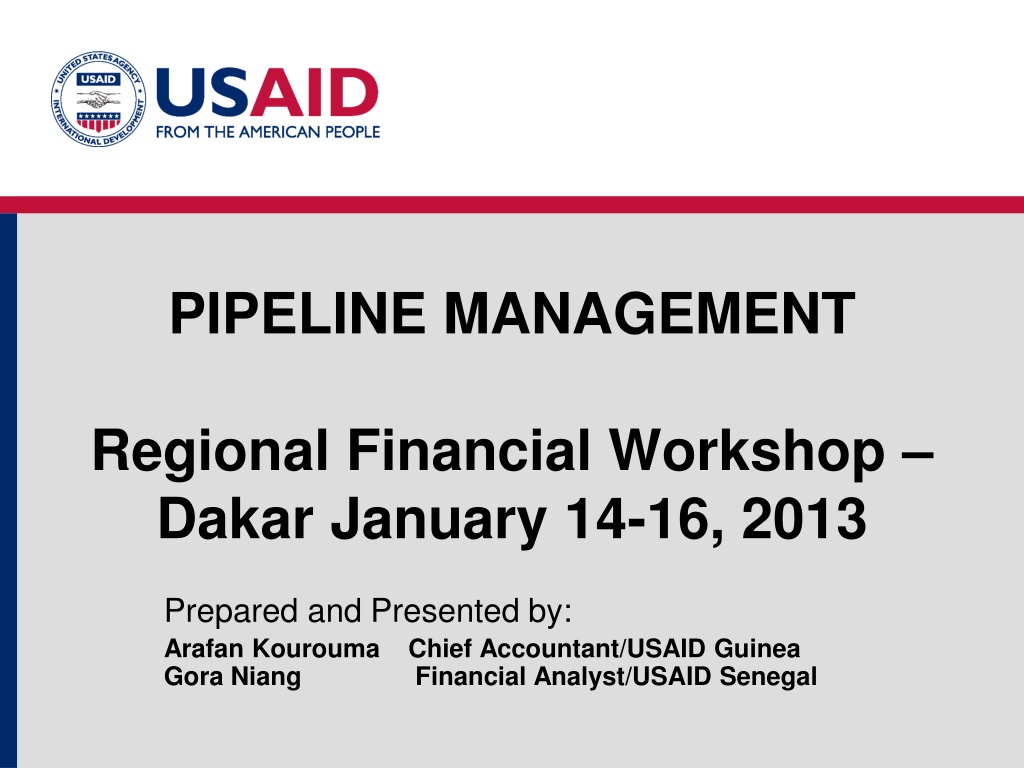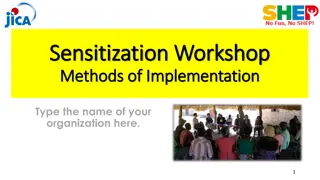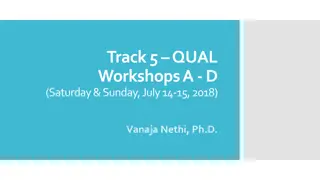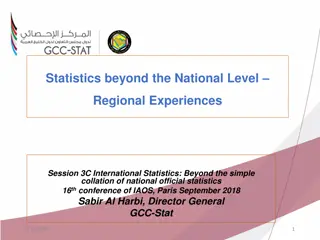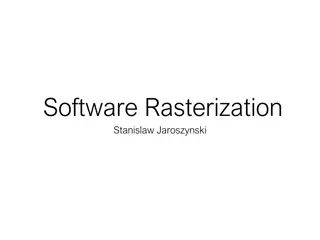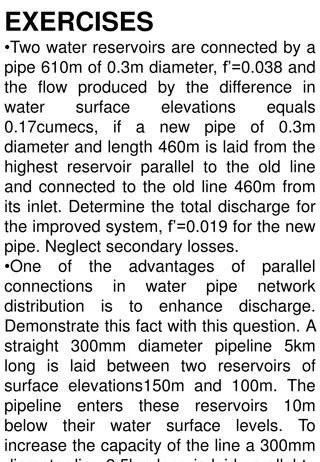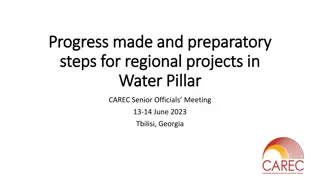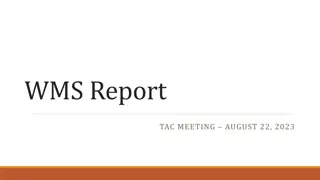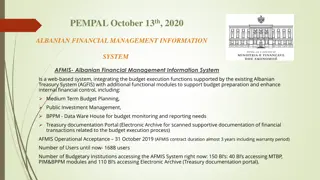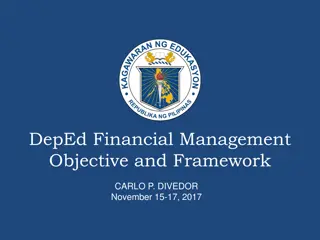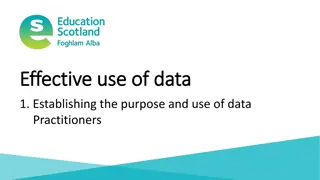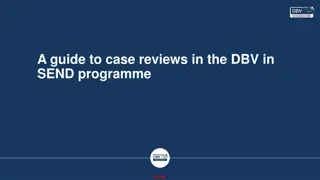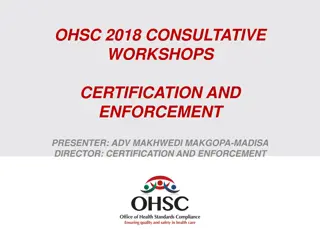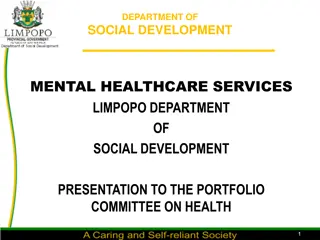Understanding Pipeline Management in Regional Financial Workshops
Define and discuss pipeline management in the context of regional financial workshops, including the definition of pipeline, timing implications, reasons for excess pipeline, and strategies for addressing excess pipeline. Key topics covered include pipeline definition, timing implications, causes of excess pipeline, and actions to take for effective pipeline management.
Download Presentation

Please find below an Image/Link to download the presentation.
The content on the website is provided AS IS for your information and personal use only. It may not be sold, licensed, or shared on other websites without obtaining consent from the author. Download presentation by click this link. If you encounter any issues during the download, it is possible that the publisher has removed the file from their server.
E N D
Presentation Transcript
PIPELINE MANAGEMENT Regional Financial Workshop Dakar January 14-16, 2013 Prepared and Presented by: Arafan Kourouma Chief Accountant/USAID Guinea Gora Niang Financial Analyst/USAID Senegal
1. Pipeline Definition Pipeline is defined as the difference between cumulative obligation and cumulative expenditures including accruals. It is the total amount obligated by USAID, but not yet expended. Pipeline = Cumulative Expenditures. Accrued Expenditures = Cumulative Disbursements (+) Accruals Accruals: Value of goods received and services rendered but not yet paid for. Obligation (-) Accrued 2
2. Pipeline Timing Implications Since Pipeline computation requires availability of accrual information, and since accruals are captured once every quarter, actual pipeline reports can be generated only as of end of each fiscal quarter. However, Projected pipelinemay be developed for a future point of time based on an estimate of future expenditures, either based on projected expenditure, or trend of historical expenditures (burn rate). Pipeline indicates variable facts depending on which quarter of the year it was developed. 3
2. Pipeline Timing Implications (Continued) For examples: The highest amount of pipeline would normally be reflected IMMEDIATELY after obtaining an obligation under a contract from USAID, but no expenditures were incurred. Consistently, it is expected, if no un-usual circumstances occurred, that the lowest pipeline amount during life of a contract would be reflected at the end of the contract period or immediately prior to USAID granting incremental or additional obligation on the contract. 4
3. Reasons for Excess Pipeline In analyzing an excess pipeline, it is important to determine the cause of this excess to be able to address it. Following are the possible main causes for an excess pipeline: Budgeting in excess of need: Due to an over- estimating of the cost or scope at the time of establishing the obligation, or over-estimating projected expenditures during the life of the obligation, which may result into amendments or upward adjustments to unnecessarily increase the obligation amount. 5
3. Reasons for Excess Pipeline(Continued) Overestimating projected expenditures may also cause a delay in USAID taking necessary de-obligation actions. Change in scope: During the life of obligation, reduction in scope may occur, resulting in residual or unneeded amounts under the obligation. Partner management should monitor such changes and take prompt consultations with their relevant USAID CORs to de-obligate resulting residual amounts. 6
3. Reasons for Excess Pipeline (Continued) Implementation delays: A delay in implementation can cause apparent (but not actual) residual pipeline balances. Partner should monitor such delays to assess whether the planned activities may be done and the related goals achieved within the agreed time period. If the relevant activities and related goals would not be achievable within the set time period; partner may consult USAID COR to coordinate a No-additional Cost extension of the project. 7
3. Reasons for Excess Pipeline (Continued) Residual balance at obligation/activity completion: Such balances may be resulting from all the above, but could also be the result of other factors, such as: -Changes in estimates due to different exchange rates or unit prices; -Held amounts for unknown potential billing, where the vendor has not yet provided final invoice. 8
4. Impact of Excess Pipeline At Agency/ USAID mission funding Level: An excess pipeline would cause holding money under obligations while it is not needed by the partner. It prevents USAID mission and USAID as a whole, from putting this money into better uses. In addition, it would cause both the US Administration and US Congress to consider cuts in future funding to USAID mission, due to the preconceived idea that the pipeline is large. 9
4. Impact of Excess Pipeline (Continued) At AO Team funding level: Holding unneeded money under the obligations causes the following: Wasting the USAID mission level of effort (time) and focus to monitor and justify old outstanding balances for long overdue expired obligations, instead of focusing on current or ongoing activities. Compliance with Laws and regulations: Excess pipeline levels would put the mission in non- compliance with laws and regulations, and makes it vulnerable to audit findings, which could affect its future funding levels. 10
4. Impact of Excess Pipeline (Continued) Specifically: Accruals: Excess pipeline may cause over accruing under the agreement. 1311 review and USAID Certification: During the 1311 Review process (conducted at least twice a year), USAID CORs are required to thoroughly review partner agreement balances, identify residual amounts, and recommend de-obligations. USAID Procurement Officers are required to determine/approve de-obligations after taking necessary analysis/close out procedures. Mission Director 11
4. Impact of Excess Pipeline (Continued) Most importantly, the USAID Mission Director is required to certify, by the end of each USAID FY, that he/she initiated a complete review on un-liquidated obligations balances and that un-needed balances have been de-obligated. Existence of un-notated excess pipeline would put the USAID mission and its Director in a vulnerable position certification. for providing misstated 12
4. Impact of Excess Pipeline (Continued) Fund Control Regulations: With the existence of excess pipeline, especially in prior year funds, USAID mission is more vulnerable Administrative fund control or Anti-deficiency Act violations (US government law), such as: Un-needed obligations or over-estimated budget/projected expenditures could be interpreted as obligation made by USAID just to parkmoney and avoid losing funds by end of FY. to committing 13
5. How to manage Pipeline Budgeting process: During the development of partner budgets, realistic budgets and time frames should be developed and coordinated management with consultation with USAID CTO and Procurement Officers prior to their submission. Accruals, 1311 review, expenditures, and Portfolio Reviews: Represent very important processes and stop over points during the year for USAID mission CORs (AOT), OA&A, and OFM to identify and de-obligate residual pipeline balances. amongst partner close outs, Planned 14
5. How to manage Pipeline (Continued) Periodic and on-going Pipeline Analysis: Pipeline analyzed by Partner management Based on Projected Expenditures: Depends on the Partner knowledge of implementation progress and expected performance/costs for future periods. 15
5. How to manage Pipeline (Continued) Example: Cumulative Obligations .. . $ 20,000,000 Cumulative disbursement ($15,000,000) Accruals $ (750,000) Pipeline by end of the quarter . $ 4,250,000 Projected monthly expenditures . $ 700,000 Number of Months covered by existing pipeline....... 6 Months 16
5. How to manage Pipeline (Continued) Pipeline Analysis Based on Historical Burn Rate: Monthly Burn Rate: expenditures during the elapsed period of the obligation (Disbursements or number of elapsed months). Anticipated burn period: the projected number of months required to spend the obligation balance, based on historical performance (Un-liquidated balance/monthly burn rate). the average monthly 17
5. How to manage Pipeline (Continued) Minimum Pipeline Standards When expenditure is slow; excess pipeline results. However, insufficient pipelines implementation delays due to insufficient funding. Partners are expected not to submit budget requests with less than six months of estimated pipeline at the end of planning periods. Whenever the projected pipeline is less than six months at the end of the fiscal year, partners are encouraged to reassess their estimated expenditure levels, reduce mortgages by eliminating activities where appropriate or request additional funds. can lead to 18
THANK YOU 19
